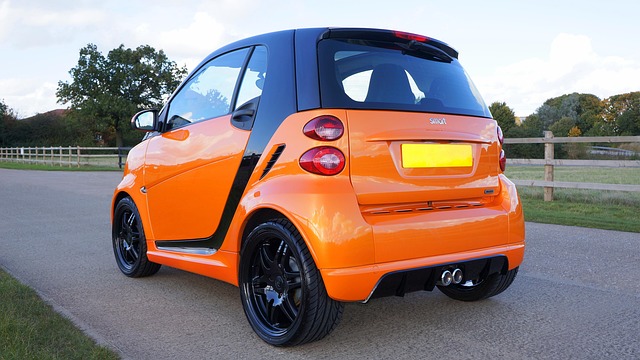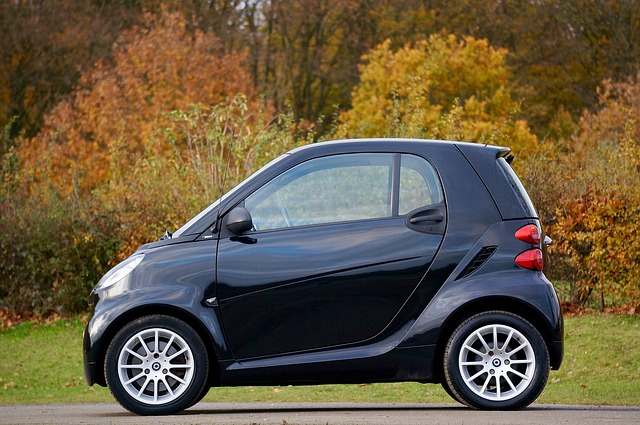Wireless car updates powered by Select Smart Car Tech are transforming mobility in the digital era, offering remote software delivery and real-time performance tracking. These OTA updates include features like congestion-aware navigation and AI-integrated driver assistance systems, enhancing convenience and safety. This technology has evolved vehicles from modes of travel to smart devices, streamlining updates and empowering manufacturers to deliver enhancements directly. Despite challenges like limited connectivity and compatibility, the future of mobility looks intelligent and responsive with continued integration of smart home systems and autonomous driving capabilities.
Wireless car updates over air, or Over-the-Air (OTA) updates, are transforming the automotive industry. This innovative technology allows for remote software upgrades, enhancing vehicle performance and security. In this comprehensive guide, we’ll explore the fundamentals of wireless OTA updates, their evolution, the underlying mechanisms, advantages of adopting smart car tech, and the challenges and future prospects in this exciting space.
- Understanding Wireless Car Updates Over Air: A Basic Guide
- The Evolution of In-Vehicle Software Update Technologies
- How Does Wireless Over-the-Air (OTA) Update System Work?
- Benefits of Implementing Smart Car Tech for OTA Updates
- Challenges and Future Prospects of Wireless Car Updates
Understanding Wireless Car Updates Over Air: A Basic Guide

Wireless Car Updates Over Air: Unlocking Modern Mobility
In today’s digital age, wireless car updates over air have emerged as a game-changer for the automotive industry. This innovative technology allows vehicle manufacturers to deliver software enhancements and fix issues remotely, eliminating the need for physical visits to service centers. By employing advanced communication protocols, cars can receive real-time performance tracking and crucial updates without any hassle. It’s a significant shift from traditional methods, ensuring that your vehicle stays up-to-date with the latest features and security patches.
This process leverages Select Smart Car Tech, enabling vehicles to communicate with remote servers and facilitate over-the-air (OTA) updates. These OTA updates can include everything from congestion-aware navigation features that optimize routes in real-time, to integration of AI in automotive industry for enhanced driver assistance systems. By adopting this technology, car owners enjoy the convenience of having their vehicles updated seamlessly, ensuring optimal performance and a safer driving experience.
The Evolution of In-Vehicle Software Update Technologies

The evolution of in-vehicle software update technologies has revolutionized the way we interact with our cars, transforming them from mere modes of transportation to sophisticated smart devices. In the past, updating a car’s software required physical visits to service centers, a process that was time-consuming and inconvenient. However, advancements in wireless communication have ushered in a new era where updates can be delivered over-the-air (OTA), much like we update our smartphones. This shift has been facilitated by the integration of select smart car tech, enabling vehicle manufacturers to push software enhancements directly to compatible vehicles.
With the rise of connected cars, features such as hands-free calling and messaging, advanced in-car entertainment systems, and traffic jam assist have become commonplace. These updates not only improve safety but also enhance the overall driving experience. Furthermore, vehicle-home synchronization has been made seamless through OTA updates, allowing drivers to keep their infotainment, navigation, and security systems up-to-date with the latest features and bug fixes. This evolution continues to shape the future of mobility, promising even smarter and more responsive cars in the years to come.
How Does Wireless Over-the-Air (OTA) Update System Work?

Wireless Over-the-Air (OTA) update systems revolutionize how we maintain modern vehicles. This technology allows for remote delivery of software updates, eliminating the need for physical visits to service centers. It’s a testament to the evolving smart car tech landscape. When an OTA update is initiated, either by the vehicle manufacturer or the driver, encrypted data packets are transmitted wirelessly to the car’s onboard system. These packets contain the latest firmware, which can enhance various features like park sensor technologies, keyless entry systems, fuel efficiency optimization, and even in-car entertainment systems.
The process ensures that vehicles stay current with the latest safety patches, performance improvements, and feature enhancements, all without disrupting the driver’s experience. Hands-free calling and messaging—critical aspects of modern driving convenience—are also seamlessly updated through this system, reflecting the continuous evolution of automotive technology to meet the needs of today’s folks.
Benefits of Implementing Smart Car Tech for OTA Updates

Implementing smart car technology for Over-the-Air (OTA) updates offers numerous benefits that enhance both the driver’s experience and vehicle management. By selecting the right Smart Car Tech, manufacturers can provide efficient and seamless software updates, ensuring vehicles remain at peak performance with the latest features and security patches. This approach eliminates the need for frequent visits to service centers, saving time and resources for both owners and dealers.
Additionally, smart car tech enables remote vehicle access, allowing users to monitor and manage their cars from a distance. Features like congestion-aware navigation can optimize routes based on real-time traffic data, reducing travel times. Moreover, these advancements in car insurance based on usage become possible with detailed driving behavior tracking, promoting safer driving habits and potentially lowering insurance costs for responsible drivers.
Challenges and Future Prospects of Wireless Car Updates

Despite the numerous benefits of wireless car updates over air, such as enhanced safety features like blind spot detection sensors and improved efficiency through fuel-efficient routing, several challenges stand in the way of widespread adoption. One major hurdle is ensuring robust and secure connectivity, particularly in remote areas where network coverage is limited. Additionally, vehicle manufacturers must develop standardized protocols for these updates to prevent compatibility issues and ensure all cars can access the same software improvements.
Looking ahead, the future of wireless car updates holds immense promise. Integrating smart home systems into vehicles through this technology opens up possibilities for convenient and connected driving experiences. Moreover, as autonomous driving capabilities advance, regular over-the-air updates will be crucial for deploying new mapping data and refining algorithms related to safe driving incentives. These prospects underscore the significance of selecting smart car tech that is not only cutting-edge but also adaptable to evolving needs in the ever-progressing automotive landscape.
Wireless car updates over air, facilitated by advancements in smart car tech, present a transformative approach to vehicle maintenance. By enabling Over-the-Air (OTA) updates, manufacturers can improve safety features, enhance performance, and provide new functionalities remotely, all while reducing the need for physical visits to dealerships. As technology continues to evolve, overcoming current challenges such as security concerns and connectivity standards, the future of wireless car updates looks promising, promising a more efficient, cost-effective, and user-friendly experience for drivers worldwide.
